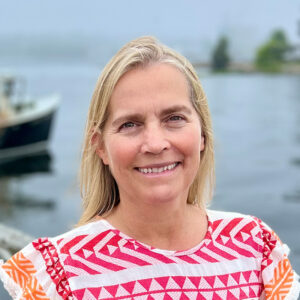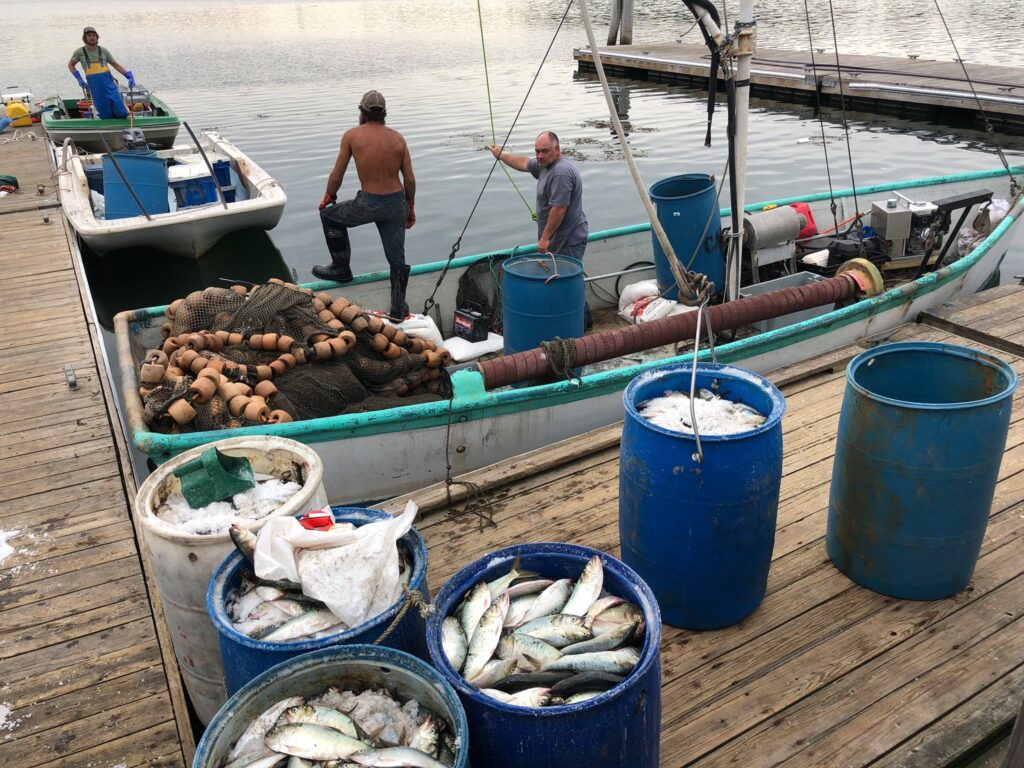Rachel Carson wrote: “To stand at the edge of the sea, to sense the ebb and flow of the tides… to watch the flight of shore birds that have swept up and down the surf lines of the continents for untold thousands of years, to see the running of the old eels and the young shad to the sea, is to have knowledge of things that are as nearly eternal as any earthly life can be.”
We should all follow Rachel’s sage advice to watch the ebb and flow of nature, and in doing so, you just might observe teeming schools of small fish churning the surface of the water.
Small forage fish are a suite of fish species serving as critical food in the ocean’s food web. Their role in attracting predators make them a great bait.
One such species, Atlantic menhaden, has played a pivotal role in maritime culture, ecology, and economy, from Florida to Nova Scotia, particularly in the Chesapeake Bay. Revered for its oil, this silvery fish, called “pogies” in Maine from the Native pauhagen, is a great symbol of the importance and complex role of forage fish.
In 2021, Maine’s commercial harvesters landed 22.1 million pounds valued at $9.5 million.
Menhaden are sometimes called “the most important fish in the sea” (H. Bruce Franklin has titled a book with this phrase). Native tribes, including the Wabanaki, utilized menhaden as fertilizer for their crops. European colonists quickly adopted this practice, integrating menhaden into their fishing and farming routines.
The uses grew during the 19th and early 20th centuries and menhaden value soared as it was used in production of oil for lighting lamps, and as a lubricant before the advent of petroleum-based products. Menhaden oil, high in omega-3 fatty acids, also found its way into commercial fertilizer, paints, varnishes, vitamins, and even lipstick.

The ecological importance of forage fish (menhaden, herring, etc.) to the health of the ocean ecosystem cannot be overstated. Related to herring and shad, menhaden are plankton filter feeders and are essential to the diet of almost all Atlantic predatory fish, including bluefish, cod, haddock, halibut, striped bass, swordfish, and tuna, as well as many marine birds and mammals.
Despite some limited historical use in the Gulf of Maine, over the last 20 years or so pogies have become utilized more and more as lobster bait. The rise is largely due to the increase in availability as larger and older fish become more abundant in the northern part of their range. It is suspected that pogies are moving north as the oceans warms and becoming more available than herring, the historically preferred and abundant bait for lobster.
In 2021, Maine’s commercial harvesters landed 22.1 million pounds valued at $9.5 million (Maine Department of Marine Resources data). The Atlantic States Marine Fisheries Commission began managing menhaden in 2020 in an ecosystem context, bringing commercial, recreational, and natural predator needs into their management assessment. Once again, the importance of menhaden shines, as the management uses an ecosystem approach for setting catch limits.
It appears to be working as menhaden stock is considered well managed for humans and marine predators alike. These same models also indicate that reproduction has increased in the northern extent of its range in recent years, likely the influence of warming waters.
Changing ocean conditions are shifting forage fish around, moving species like Atlantic herring and Atlantic menhaden north and therefore influencing what fish are available for both the ecological systems and fishermen. For the near future, menhaden are going strong in Maine and will likely continue to do so. The recent shift in the lobster industry from relying on herring to menhaden is a sign of the times. As the ocean changes, we will continue to see the rise and fall of various forage fish regionally and locally.
This summer in Maine, pogies are playing a star role as a critical fish in the sea. Moving forward, it is on all of us to make sure that our use and management of the ocean keeps pace with changing conditions.
Jennifer Seavey is chief programs officer for Island Institute, publisher of The Working Waterfront. She may be contacted at jseavey@islandinstitute.org.





